Introduction to Chicken Feeders
Chicken feeders are important input in the poultry farming practices that aims at effectively feeding the chickens . Feeding management is an essential factor especially when it comes to growth and production of birds since it determines growth rates, incidences of production and level of health.
The common types of feeders include the gravity, treadle, hanging and automatic feeders to give the chicken and depending on the number of chickens, climate, and management practices in place, the farmer needs to select the most appropriate one. Apart from making sure chickens have unrestricted access to quality feed, a proper feeder also reduces wastage, inhibits the feed from spoiling and keeps off pest. It is therefore important to understand the various feeder types as will as the advantages of using this product in order to come up with a good feeding plan for your chickens.
Best Chicken Feeders for Easy Feeding
Chickens are being raised in backyards for nay pet, which gives fresh eggs is a good business among the American people. But, it is important to take good care and feed your flock in order to give your flock good returns. Perhaps one of the best costs that any chicken owner can make is getting the right feeder. In this article, we will look into some of the most recommended chicken feeders for purchase in the U. S. that will provide convenience and easy handling when taking care of your chickens.
1. Durability and Material Selection
The material used in the cooker is very important when picking on the chicken feeder as far as its longevity as well as the ease in cleaning is concerned. As for the material these feeders are normally made from most of them incorporates the use of plastic material or metal one.
Plastic Feeders
- Lightweight and Easy to Move: Plastic feeders are typically easier to handle and transport.
- Affordable: Generally, plastic feeders are less expensive.
- Rust-Resistant: Ideal for those who live in humid climates.
Metal Feeders
- Durable: Metal options last longer and are often more resistant to animal tampering.
- Easy to Clean: A smooth metal surface can be easily sanitized.
- Weight: Heavier than plastic, making them less likely to be tipped over.
2. Types of Chicken Feeders
Treadle Feeders
Treadle feeders are especially suitable for the range-of- yard chickens since they restrict the bird’s access to feed. It automatically opens when a chicken steps on console hence restricting all the unwanted pests from accessing the feed.
- Advantages: Reduces feed waste, lessens the chance of rodents or wild birds getting in, and keeps feed fresher.
- Best For: Those with outdoor flocks or problems with pests.
Hanging Feeders

These feeders are hanging types, which makes them to be off the ground hence less vulnerable to pests attacks, and are adjustable in the sense that they can be raised to the right height as the chicken grows.
- Advantages: Being easy to refill and maintain as well it controls contamination from droppings or any debris.
- Best For: Smaller coops with limited floor space.
Gravity Feeders
Gravity or auto feeders are simple where feed stored in a bin is dropped on to a tray as the chicken feeds. They are simple in design and it makes them widely recommendable especially to those starting farming and even those who have been into farming for a very long time.
- Advantages: Easy in design and it can can comfortably contain a large quantity of feed and therefore is not frequently topped up.
- Best For: Larger flocks where constant access to feed is necessary.
Nipple Feeders
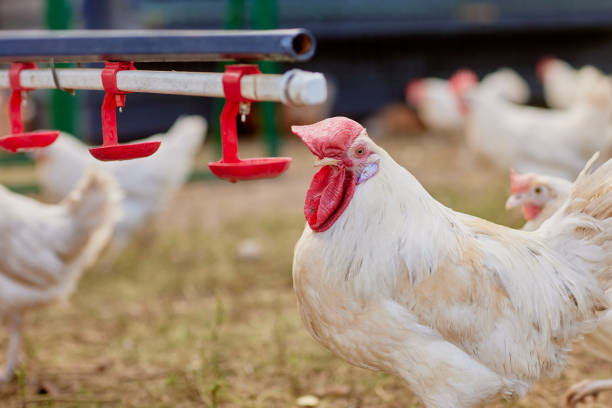
While primarily used for water, some advanced systems combine water and feed. Chicken nipples release water only when pecked, driving cleanliness in the feeding area.
- Advantages: Minimizes waste and keeps water clean.
- Best For: Innovative farmers looking to maximize efficiency.
Automatic Feeders:
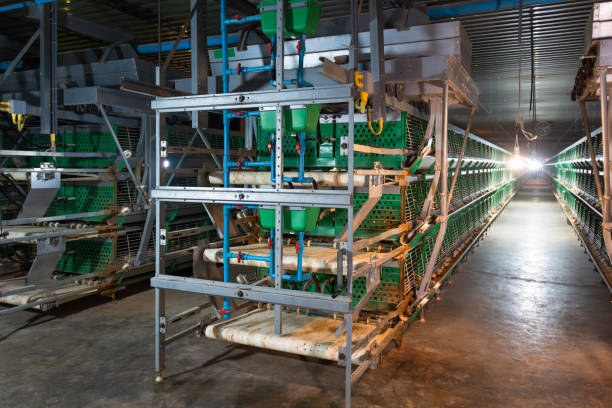
- These feeders dispense a controlled amount of feed at set times, making them convenient for busy chicken owners.
Overhead Feeders:
- Feed is delivered from above, encouraging natural foraging behaviors and minimizing waste.
3. Top Recommendations for Chicken Feeders
1. Little Giant Galvanized Steel Feeder
- Material: Heavy-duty galvanized steel
- Capacity: 25 pounds
- Features: Wide mouth for easy filling, with a durable design that resists rusting.
2. Harris Farms Chicken Feeder
- Material: Plastic
- Capacity: 5, 10, and 20 pounds options
- Features: Designed to prevent spillage, this feeder is lightweight and has a wide base to prevent tipping.
3. RentACoop Treadle Feeder
- Material: Heavy-duty plastic with metal components
- Capacity: 35 pounds
- Features: Keeps feed safe from pests and designed to be used for various bird types, including chickens.
4. OverEZ Chicken Feeder
- Material: Solid wood with a metal top
- Capacity: 50 pounds
- Features: Stylish design for those wanting a natural look in their coop while offering a large capacity.
5. Grandpa’s Feeders Hanging Chicken Feeder
- Material: Plastic
- Capacity: 5 to 10 pounds
- Features: Unique design that hangs deterred pests and is aesthetically pleasing for any coop.
4. Considerations for Choosing a Feeder
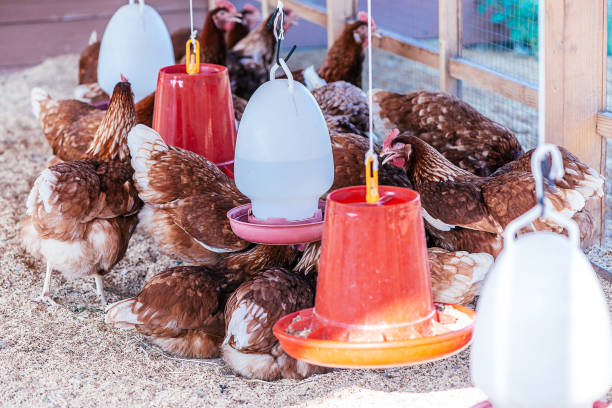
Flock Size
Evaluate the number of chickens you have. Larger flocks benefit from bigger feeders to accommodate more food and reduce the frequency of refills.
Feed Type
Chickens require a balanced diet, so consider if your feed consists of pellets, grains, or mash. Choose a feeder compatible with your feed type.
Weather Resistance
In different climatic conditions, the use of resistant material should be used in order to serve its intended function for a long time.
Maintenance
Seek designs which can easily be cleaned and refilled to avoid a lot of capital being used in the process. Feeding chickens should not be a hard thing to do if you want your chickens to be happy then go for an easy feeding process.
Key Features Of Chicken Feeders
1. Little Giant Galvanized Steel Feeder
- Material:Tough and rust free body through the use of strong, heavy duty galvanized steel.
- Capacity: Large hopper capacity up to 25 pounds feed that helps not to refill often.
- Wide Mouth Opening: They enable easy filling and also reduce on spillage of the contents present in the units.
- Weather Resistant: Proper for outdoor conditions in different weather conditions.
2. Harris Farms Chicken Feeder
- Material: Made of lightweight plastic.
- Capacity Options: Available in 5, 10, and 20 pounds to accommodate different flock sizes.
- Spill Prevention Design: Minimizes feed waste by keeping the feed contained.
- Easy to Clean: Smooth surfaces make cleaning simple.
3. RentACoop Treadle Feeder
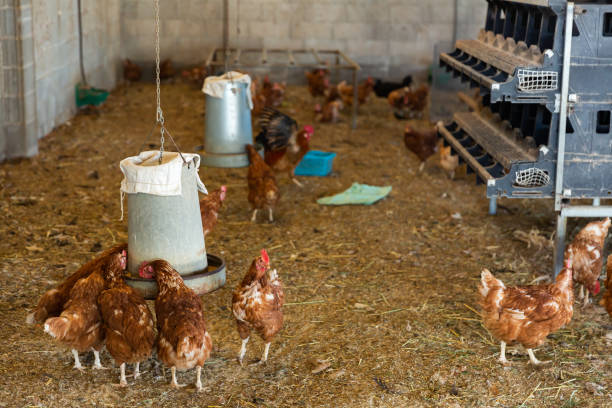
- Material: Heavy-duty plastic with metal components for added durability.
- Capacity: Holds up to 35 pounds of feed.
- Treadle Mechanism: Opens when a chicken stands on a platform, preventing access to feed by pests.
- Versatile Use: Suitable for a variety of birds, providing flexibility for multi-species farms.
4. OverEZ Chicken Feeder
- Material: Made of overlayed wooden frame and with metal top decór to create sturdiness.
- Large Capacity: Their hopper capacity can go up to 50 pounds of feed which helps to minimize the time that one has to spend on refilling the feeder.
- Elevated Structure: Maintains feed off the floor preventing soiling by the birds droppings and other form of feed soiling agents.
- Stylish Design:Almost unnoticeable with a great appearance for any type of backyard.
5. Grandpa’s Feeders Hanging Chicken Feeder
- Material: Made from durable plastic.
- Capacity Options: Available in designs that hold 5 to 10 pounds of feed.
- Hanging Design: Deters pests by elevating the feeder off the ground.
- Easy to Use: Simplifies refilling and minimizes feeding mess.
Key Features Summary
- Material Durability: Varied options like plastic and galvanized steel for different needs.
- Capacity: Ranges from small to large to fit various flock sizes.
- Ease of Use: Features like wide openings, hanging designs, and treadle mechanisms for simplicity.
- Pest Prevention: Some feeders are specifically designed to keep out rodents and wild birds.
- Ease of Cleaning: Smooth surfaces and easy refilling for better maintenance and hygiene.
Best Place For Chicken Feeder
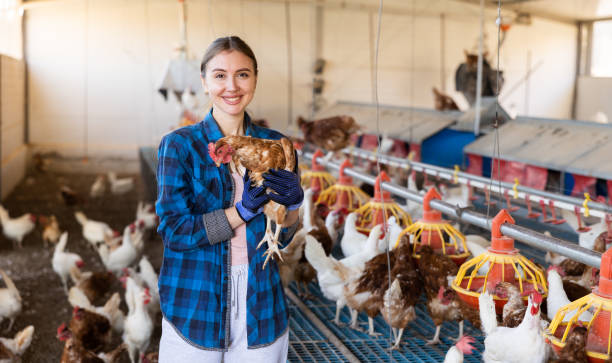
1. Inside the Coop
- Protection from Elements: Suzanne recommended that i should put the feeder inside the chicken coop in order to shield it from rain, wind as well as strong sun. This will prevent water from getting into the feed thus avoiding any possibility of the feed becoming spoilt.
- Access to Shelter: Chickens prefer to feed in groups since they believe they may be at risk from birds of prey since they have no protection.
- Easy Monitoring: Feeding inside the coop is very convenient as you are able to monitor the health of the chicken animals as well as their feeding habits.
2. In the Run
- Space for Movement: If your chickens have a designated run, you can place the feeder there as well. Ensure it’s in a spot where the chickens can eat comfortably without too much jockeying for position.
- Avoid Damp Areas: Choose a spot inside the run that is elevated and not prone to puddles or mud, minimizing feed contamination.
- Deter Pests: Be mindful of placement to avoid attracting unwanted attention from rodents or wild birds. Elevating the feeder or using a treadle feeder can help with this.
3. Height Considerations
- Proper Height: When using hanging feeders, these should be put at a level that they are just above the backs of your chickens. The feed should be placed within easy access and reach of the chickens such that they cannot stretch too much in order to get it.
- Prevent Contamination:Never place feeders directly on the ground as it will be contaminated with droppings, dirt, or spilled feed. There are some measures that can be taken to overcome this problem; using hanging feeders or using feeder stands can be of great help here.
4. Away from Water Sources
- Keep Feed Dry: Make certain that feeder is located at a distance from other water sources such as drinkers to avoid contamination by water making feed to be moldy. By feeding wet food there are some health problems that one is likely to encounter such as mycotoxin.
5. Accessibility
- Easy Refilling: Choose a feeder location that would make it easy for you to refill it and also clean it from time to time. If done properly this not only saves time but also makes certain that your chickens are always fed.
- Visibility: Ensure that the area is well-lit, if possible, for easy monitoring and maintenance.
6. Frequent Movement
- Rotate Feeding Locations: If you have the ability, consider rotating the feeder to different locations over time to prevent wear on the grass or ground and to encourage foraging behavior in your chickens.
How many Feeders Per Chicken?
The quantity of feeders required per chicken can differ in view of a few elements, including the size of the herd, the kind of feeder utilized, and the taking care of style. Here are a few common rules to assist you with deciding the number of feeders you that ought to have for your chickens:
General Guidelines
-
Basic Rule of Thumb:
- For most backyard flocks, it is recommended to have one feeder for every 8 to 12 chickens. This ensures that all birds have access to feed without overcrowding, which can lead to stress and competition.
-
Feeding Style:
- If you are using free-choice feeding, where chickens have continuous access to food, fewer feeders may suffice since they can eat at their own pace and return when they’re hungry.
- In contrast, if you are using a controlled feeding schedule, providing additional feeders may help prevent aggressive behavior during feeding times.
-
Flock Dynamics:
- In case you notice signs of injection in the birds especially around the feeder or if the birds are ranked especially in terms of feeder access then a new feeder should be added so that all the birds can feed.
-
Flock Size Variations:
- In larger flocks of 20 chickens or more, having additional feeders can be beneficial. For example, with a flock of 30 chickens, having 3 to 4 feeders can minimize competition and ensure all birds have consistent access to feed.
Conclusion
Choosing the right chicken feeders is essential for ensuring their health and reducing waste. Common types include gravity feeders, treadle feeders, hanging feeders, automatic feeders, and overhead feeders. Popular brands in the U.S. include Little Giant, Harris Farms, Grandpa’s Feeders, and RentACoop. The selection should consider flock size and management style, with backyard keepers often using smaller feeders and commercial farms opting for bulk solutions. Maintaining cleanliness and easy access to feed promotes better eating habits among chickens. Always observe flock behavior to adjust the feeding setup as needed. A well-chosen feeder contributes to a healthier, happier flock.
FAQs About Chicken Feeders
-
How often should I refill the chicken feeder?
- It depends with the size of flock and the capacity of the feeder. In general, as a rule, check the feeders daily and restock whenever possible so that the chickens always have feed.
-
What type of feeder is best for a small backyard flock?
- For small flocks other feeder types that are normally suggested include the gravity feeders and the treadle feeders. These permit its use in an unending basis with least wastage and at the same time deterring negligence that may lead to pest infestation.
-
How high should I hang a chicken feeder?
- Feeders should be hung at the height of the chickens’ backs so they can easily reach the feed but are also not too low to avoid contamination from droppings.
-
Can I use a regular bird feeder for chickens?
- Although, you may use a bird feeder, it is not usually preferred as the size and type of feed for chicken is slightly different. Specific chicken feeders are often larger and also much more uncovered to the birds.
-
Why are treadle feeders beneficial?
- Treadle feeders are also ideal since they do not allow rats or other wild birds to access the feed but only the chickens step on the treadle plate to access the feed.
-
How do I clean my chicken feeder?
- But if possible, then the feeder should be disassembled so that all components can be cleaned thoroughly. Wash with warm soapy water; this is very important to make sure that the parts are clean and all soap residue is washed off. This way the floor reduces the chance of mold and bacterial formation through cleaning.
-
What happens if I overfill the feeder?
- Overfilling can lead to feed becoming stale or contaminated, as it may not be consumed quickly. It can also attract pests and create a messy environment.
-
How can I prevent chickens from wasting feed?
- Use feeders that minimize spillage, such as treadle or hanging feeders. Adjust feeder height and ensure the feeder design accommodates the flock size to reduce chasing and fighting for feed.



